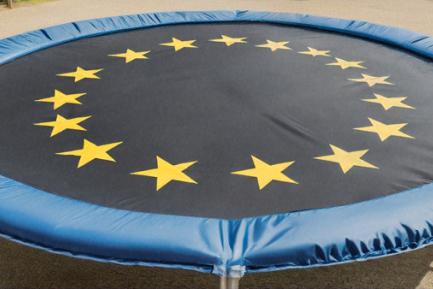NGEU: the action plans in the digital sphere in key sectors of the Spanish economy

The Plan includes investments in the sphere of digitalisation to help attract tourists, who are becoming increasingly digitalised, as well as to improve the management of tourism flows and to boost the competitiveness of companies in the sector.
The Plan mobilises funds from the Recovery and Resilience Mechanism (RRM) to the tune of 3.4 billion euros in the sector, of which it plans to devote 15.4% to investments in digitalisation. This amounts to some 540 million euros in the period between 2021 and 2023. To determine whether this sum is significant, we must compare it with the industry’s usual level of investment in digitalisation. To this end, we made an approximation using the EUKLEMS database, which provides sector-by-sector information on investments in different areas, including some related to the digital sphere.2
This exercise indicates that the total amount set out in the Plan represents around 25% of the sector’s average annual investment in 2014 and 2015. If we distribute the investment evenly across three years, this represents an increase of 8.3% per year. This is a notable increase if we consider that between 1996 and 2015 the average annual increase in investments of this kind in the sector was 7.2%.
If we look in more detail at the type of investments envisaged, they can be grouped into three categories:
1) Tourism Sustainability Plan for destinations: the objective of these investments is to improve the customer’s tourism experience through digital applications (websites, apps), to develop and manage connectivity infrastructure (fibre optic cable, municipal WiFi networks, 5G), to develop artificial intelligence (AI) and big data tools (online reputation management, flow management, etc.) and to engage with businesses providing tourism services at the destination (improve training and offer advice on digital matters).
2) Digital Transformation Plan for tourist destinations: the proposal involves creating a platform that provides interoperability to the supply of public and private tourism services, as well as creating the Tourism Integration System (TIS), an environment for accessing information on supply and demand which offers analytical tools as well as other tools to facilitate interaction with tourists.
3) Digital Transformation Plan for companies in the tourism value chain through artificial intelligence and other enabling technologies: this latter chapter foresees the creation of a sector-wide database to enhance the use of big data and AI in the sector, as well as to generate a public-private collaborative environment in order to create a kind of app store aimed at businesses in the sector. Finally, financing will be offered for innovation processes, especially in SMEs.
While the actions considered are a step in the right direction, the Plan does not provide many details about the mechanisms for facilitating the process of the modernisation and digitalisation of SMEs.
- 2. To approximate the volume of investment in digitalisation, we sum up the categories of software and databases, research and development, computers and telecommunications equipment. We also approximate the tourism sector using the official CNAE economic activity sectors I and R (hospitality and artistic, recreational and entertainment activities).
The aim is to promote the modernisation and productivity of the industrial ecosystem through the digitalisation of the value chain. MRR funds amounting to 3,781.5 million euros are expected to be mobilised, of which 25% is earmarked for investments in the sphere of digitalisation (some 950 million euros) between 2021 and 2023. When we approximate the sector’s investments in digitalisation using the EUKLEMS database, the investment considered represents 16% of the sector’s average annual investment in 2014 and 2015. Distributed evenly across three years, this represents an increase of 5.4% per year, a significant rate given that the average growth in this type of investment in the sector stood at 4.0% between 1996 and 2015.
The investments considered can be distinguished between two areas of focus:
1) Promoting sector-wide data spaces: facilitating the creation of large-scale sectoral data spaces to serve as a basis for digitalisation or to be made use of with the help of analytical tools. Finance pilot projects in order to explore data exchange possibilities.
2) Investments in the sphere of the circular economy: financing the adoption of digital technologies aimed at environmental management.
There is a third, very important area of focus which is based on the new figure of public-private collaboration (so-called PERTEs), designed to promote projects with a high knock-on capacity as well as containing elements of investment in digitalisation. However, the specific actions that will be carried out in this third area are yet to be determined.
The focus of the Plan is to respond to the challenges that are eroding the sector’s competitiveness. One such challenge is the delay in the incorporation of digital technologies. To address this delay, 7% of the RRM funds allocated to the sector (1,051 million euros in total) are earmarked for investments in digitalisation, representing some 74 million euros to be distributed between 2021 and 2023.
While the amount in absolute terms may seem small, the figure envisaged in the Plan represents 90% of the sector’s average annual investment in 2014 and 2015. This is a very significant amount which could mark an important step in the digitalisation of a sector which currently lies at the tail end of the ranking of sectors in this field, according to the CaixaBank Sectoral Digitalisation Index 2020.3
Looking at the investments in more detail, we can distinguish between actions aimed at the agri-food sector and others more specific to the fisheries sector:
1) On the side of the agri-food sector, a convertible loan facility is to be opened through the public national innovation company (Empresa Nacional de Innovación S.A., or ENISA) for SMEs in the agri-food and rural sectors that propose innovative and digital projects. It also proposes creating a digital innovation hub to make it easier for businesses to adopt new technologies and to create an observatory to track the entire process of the sector’s digitalisation.
2) On the side of the fisheries sector, a battery of measures is envisaged, including aid for the digitalisation of the fishing fleet and the fishing surveillance services, as well as investments to modernise the Network of Marine Reserves of Interest for Fishing.
In short, the Plan envisages significant digital investments in the three sectors considered. While the areas of action appear to be adequate, the final impact will depend on the quality of the investments that are carried out. In this regard, coordination between the public and private sectors and independent assessments of the various investments will be important.
- 3. See https://www.caixabankresearch.com/en/document/20-july-2021/caixabank-sectoral-digitalisation-index-2020
- 1. In 2019, these three sectors together accounted for around 29% of GDP.
- 2. To approximate the volume of investment in digitalisation, we sum up the categories of software and databases, research and development, computers and telecommunications equipment. We also approximate the tourism sector using the official CNAE economic activity sectors I and R (hospitality and artistic, recreational and entertainment activities).
- 3. See https://www.caixabankresearch.com/en/document/20-july-2021/caixabank-sectoral-digitalisation-index-2020


